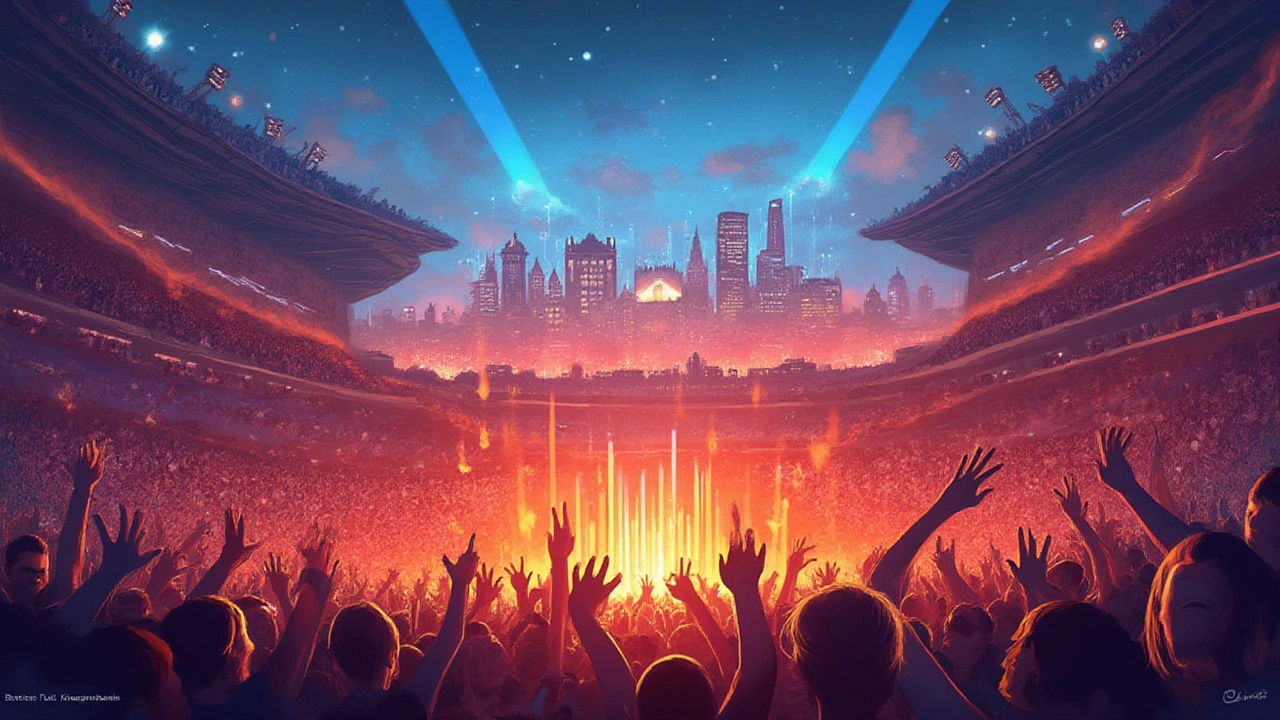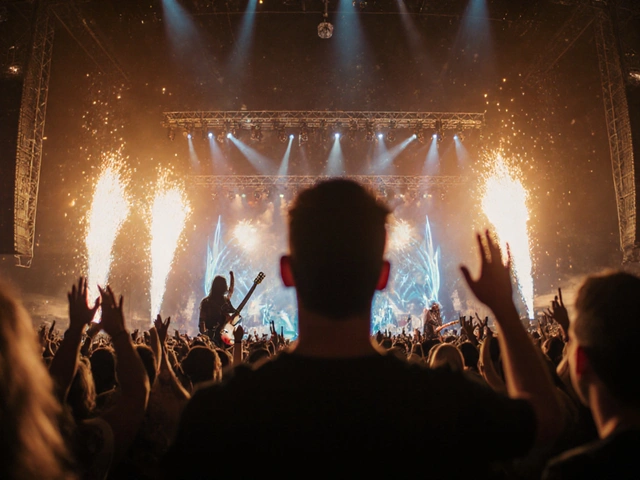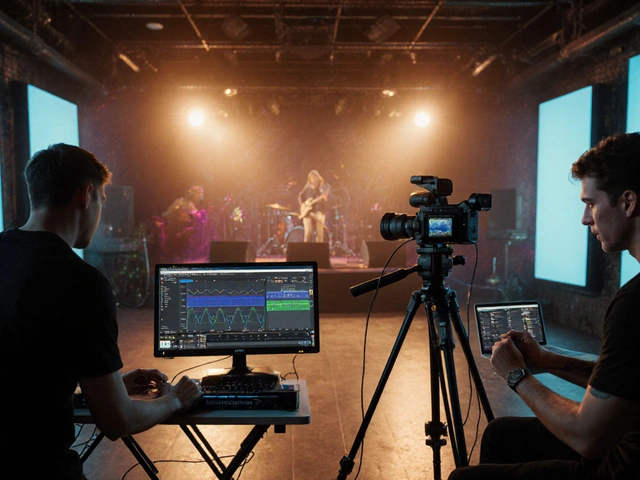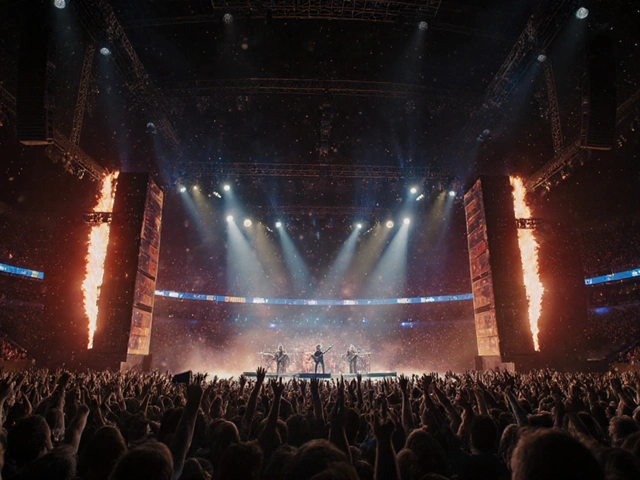Thousands of feet pounded the ground, synchronized with the music, and for once, the world felt it — not just in the heart, but deep beneath the surface. Taylor Swift made history in Seattle, and this time it wasn't about breaking streaming records or selling out stadiums. The Eras Tour at Lumen Field, July 2023, actually rattled the earth hard enough to register on local seismic monitors. The idea of a pop concert causing a mini-earthquake sounds outrageous until you see the data. No, it wasn’t a tectonic shift causing the shudder; it was 70,000 Swifties jumping in unison. It’s one of those stories that, if someone told you at a bar, you’d laugh it off. But the charts, the shaking ground, and the stunned seismologists have the receipts. It’s wild to imagine, but this isn’t even the first time music has moved more than souls. Let’s pull back the curtain on how a stadium full of fans can literally move the earth — and why this even matters.
The Science of Seismic Concerts: How Do Fans Cause Earthquakes?
So how exactly does a concert become powerful enough to register as an earthquake? Earthquakes are usually caused by tectonic forces miles underground, but seismographs are sensitive tools. They pick up all types of vibrations — and if a stadium pulses with tens of thousands of people moving in sync, that shakes the ground. When Taylor Swift played "Shake It Off" (how fitting), the booming chorus prompted what seismologists called the “Swift Quake.” Dr. Jackie Caplan-Auerbach, a geology professor at Western Washington University, confirmed on her Twitter (er, X) thread that the seismic activity during Swift’s two-night stint clocked in at around magnitude 2.3. That’s not enough to topple buildings, but it’s roughly equivalent to what you’d feel if a train rumbled by.
Seismologists measure these "concert quakes" using a network of sensors often placed near big venues for scientific or safety reasons. These sensors normally watch for real quakes, but when tens of thousands stomp together, they record repeating pulses — sometimes in perfect sync with the music’s beat. In fact, Dr. Caplan-Auerbach told CNN, “The shaking was generated by fans jumping and dancing, each time Taylor took the stage, it matched the setlist, especially the high-energy numbers.” Even more amazing, the data revealed some songs shook the earth harder than others. While you’d expect the ground to react during "Shake It Off," it stunned researchers that the impact was measurable from well outside the stadium.
Check out how the Lumen Field quake compared to another famous concert quake (from the Seattle Seahawks’ "Beast Quake" in football):
| Event | Magnitude | Year | Notes |
|---|---|---|---|
| Taylor Swift Eras Tour | 2.3 | 2023 | Concert quake; fans jumping for several songs sets |
| Seattle Seahawks Beast Quake | 2.0 | 2011 | NFL playoff celebration: one dramatic play |
While football fans and music fans both get rowdy, it turns out 70,000 Taylor Swift fans sustaining their energy for an entire set far outweighs a single touchdown celebration. What makes these moments so fascinating is how predictable and organized seismic waves can be during a concert — pulses that match the rhythm, rather than the randomness of tectonic movement.
From Pearl Jam to Metallica: Not Just a Taylor Swift Thing
If you think only Swifties can rock the ground, think again. Concert-induced quakes aren’t brand new. Back in 2011, Seattle’s Clink stadium captured what’s now known as the "Beast Quake" — but it was from a crowd reacting to Marshawn Lynch’s epic NFL touchdown, not a concert. Still, the data laid the groundwork for what’s possible when thousands of bodies act as one. Step outside the sports world, and you’ll find famous music events, too. In 2019, Metallica fans managed to set off earthquake sensors during a show in Bogota. There’s just something about a mega crowd moving together that amplifies every footstep.
Even U2’s legendary 1997 Mexico City show made geologists do a double-take. Fans at Estadio Azteca, easily over 100,000, bounced together and the seismic monitors registered equivalent to a small tremor. This pattern isn’t just in stadiums, either; smaller venues can do the same if the timing and crowd density hit just right.
Why do some bands trigger the earth while others don’t? It’s usually the tempo, beat, and sheer passion. High-BPM tracks, deep bass, and audience participation make a perfect recipe. Not every ballad, though. For example, researchers noticed no grounded shaking during slow songs like "All Too Well". This just goes to show the mood, energy, and even the setlist have seismological consequences — not something generations of earth science teachers predicted.
If you’re headed to a massive stadium show, pay attention to the floor. You might feel the pulse through your sneakers when the headliner drops their heaviest hit. The excitement in the air isn’t just emotional; you’re literally part of history, making the ground tremble alongside thousands of strangers.

The Biggest and Wildest "Concert Quake" Facts
The numbers get even crazier when you to dig into the data. According to the Pacific Northwest Seismic Network, the "Swift Quake" during the Eras Tour was not only more intense than previous stadium celebrations but lasted even longer — sustained by a crowd that never lost steam. What made her shows different? Experts said the key was the rhythm and duration. Three hours of non-stop energy, hits like "Shake It Off" and "Look What You Made Me Do," and a fan base fueled by months (if not years) of anticipation. That’s the perfect mix for seismic magic.
Some surprising details:
- Some songs shook the ground harder than others — the instruments and choreography lined up with seismometer spikes.
- The rhythm of the average concert-goer’s jump synced precisely with the song’s BPM (beats per minute), leading to predictable high and low seismic waves through each set.
- The "Swift Quake" made headlines on every major news network, and even late-night comedians got in on the action. Stephen Colbert quipped, “Even the planet can’t resist shaking it off.”
- The ground shaking was so pronounced that nearby residents (not attending the concert) actually called the city’s emergency lines, asking if there’d been a minor earthquake.
- Swift’s team celebrated the seismic event, even posting seismogram images to their social channels — talk about a flex.
- This phenomenon isn’t just good fun; it’s now being used by researchers to understand crowd dynamics, stadium architecture, and even how rhythmic vibrations might affect older infrastructure.
Check this out, too. Afterward, geologists combed the data and realized there were repeatable spikes every 15–20 minutes — right at the high-energy songs in her setlist. Here’s a quick rundown of what scientists saw:
| Song | BPM | Seismic Peak |
|---|---|---|
| Shake It Off | 160 | Yes |
| Look What You Made Me Do | 128 | Yes |
| All Too Well | 93 | No |
| Blank Space | 96 | Low |
Making Your Concert Experience Safer (and Even More Fun)
Can you actually prepare for a concert that shakes the earth? Oddly enough, yes — and not because you’ll topple over. Modern stadiums are built with strong foundations, and the kind of shaking Swifties or metalheads cause is nowhere near enough to break them. But if you want the best (and safest) experience, keep a few tips in mind:
- Wear shoes with support. If the floor's vibrating, those cheap sandals won't cut it. Your knees will thank you.
- Stay hydrated. All that jumping takes more out of you than you think, and stadiums get hot fast, especially with 69,999 friends.
- If you’re sensitive to big vibrations, stick to the edges of the crowd. The middle is where you’ll feel it strongest.
- Secure loose items. You’re more likely to fumble your phone in a crowd quake than during a solo at home.
- Bring earplugs for comfort. Enthusiasm and decibels both go through the roof, especially if you’re near the speakers.
- Want to measure your own experience? There are vibration meter apps that turn your smartphone into a mini seismometer. Try recording during a major track just for fun — you’ll be surprised what you pick up.
If you’ve ever bragged about “feeling the bass in your bones,” now there’s actual science to back you up. And stadium architects are taking cues from these events, tweaking designs to keep audiences comfortable and buildings even more resilient. The world of earthquakes and concerts is a lot closer than you’d think.
To quote Dr. Caplan-Auerbach again:
“When music has the power to move the earth, it changes what you think is possible. It’s a beautiful harmony of science and joy.”
If you’re waiting to see which artist will make headlines next, keep your eye on festival seasons and heavy tour stops by mega-acts. If you’re at one of these record-setting shows, savor it. Next time you’re jumping and screaming alongside thousands, remember: you’re not just lighting up social feeds — you might just be rocking the Richter scale, too.






Madeline VanHorn
Really? A concert causing an earthquake? Sounds like one of those overhyped news stories designed to inflate a celebrity's ego rather than a scientific fact. It's amusing to think that a pop star's fanbase has that much seismic impact. But seriously, can anyone give a solid source on this? I’m skeptical until I see actual seismographic data, not just a couple of tweets and hearsay.
Music does have an undeniable impact on culture and emotions, but physically shaking the earth? That seems a bit far-fetched for all the adoration and fan-gushing. If it were true, wouldn't we see similar effects at other massive events? I’m curious how they separated the concert's vibrations from normal geological activity.
Rocky Wyatt
Honestly, the idea of a concert shaking the earth is fascinating, but it also makes me think about how society places value on celebrity phenomena over more substantial worldly issues. I mean, the crowd's energy could cause vibrations, sure, but equating it with an earth-shattering event seems a bit of an exaggeration, doesn’t it?
Still, I’d love to see some detailed analysis linking crowd behavior to those seismic readings. It’s a weird intersection of science and pop culture. Anyone here a geology buff to shed light on this?
Christina Morgan
This is such a remarkable piece of information! I was at a similar large-scale event once, and the unity and energy of thousands of people really do create a tangible atmosphere. I’ve read some research before about how crowd movements can register on seismic sensors, which is honestly pretty cool.
But what fascinates me most is not just the science, but what it says about human connection — how something as simple as music can literally move the ground beneath us, metaphorically and literally. Taylor Swift’s ability to bring people together is truly unmatched!
Glenn Celaya
ok but seriously tho, does anyone else find it crazy that we’re hyping this like it’s some kinda miracle? people stompin and singin loud enough to make the earth shake. i mean, its wild but u know it sounds like the kinda clickbait i’d avoid on youtube.
tho if it’s true i gotta admit, that’s some next level fan loyalty. lol imagine feeling the bass drop AND a little shiver from the ground cuz of your fave artist. anyone been at one of these shows? lemme know what’s up!
Tonya Trottman
Ah, pop culture shaking the earth, literally! What a fitting metaphor turned literal reality. But I can't help but wonder if people actually grasp what they're celebrating. That concert didn't cause a tectonic shift; it caused vibrations similar to walking or a stampede. The media loves to inflate almost everything into a seismic event nowadays.
And it's funny because the word 'seismic' gets tossed around when describing cultural phenomena, like this one, as if it’s suddenly a natural disaster. Please, a little intellectual honesty wouldn't hurt.
Ray Htoo
This merges science with culture so beautifully! I’d wager that the seismic readings captured weren’t any different from heavy stadium events in the past, but framing it this way definitely sparks curiosity and engagement.
It'd be interesting to explore how different music genres or concert setups achieve different frequencies and intensities that might register on seismic instruments. Does anyone have info on how these readings compare across events?
The dynamic force of collective human energy is just so mesmerizing.
Veera Mavalwala
I find it both amusing and somewhat poetic that the sheer force of fandom can literally be measured in the shifting of the earth’s crust. It's an extraordinary spectacle, isn’t it? Beyond the literal seismic readings, it metaphorically shakes the foundations of what we perceive about music's power. Truly, it is a melodious dance between science and culture.
Of course, some may scoff and dismiss it as simple hype, but let’s indulge in the wonder of this magnificent merging of collective human spirit and earthly phenomenon. Isn’t it dreamy?
Santhosh Santhosh
From a scientific angle, the phenomenon is indeed plausible. Crowd-induced seismic activity has been recorded at large-scale events previously—it's a fascinating natural experiment in human mass behavior affecting geophysical instruments. The energy transfer from synchronized movement of thousands of bodies can definitely register on sensitive seismographs.
However, to interpret these events requires careful distinction between a real geological event and an anthropogenic vibration. Both are technically earthquakes by some definitions but stem from very different causes. I'd encourage more rigorous scientific communication to avoid sensationalism.
Natasha Madison
Ok, so while everyone’s starry-eyed about this 'earthquake' caused by Taylor Swift’s concert, I can’t help but question the narrative. What if there’s something more here? Big events causing seismic readings is just a handy cover for something else going on underground, literally. Has anyone considered that governments might manipulate reports to distract us from actual geological threats?
Not saying it’s definitely true, but I’m cautious about such convenient stories. There's always more to the story beneath the surface—pun intended.
Sheila Alston
While it’s heartwarming to see how music can unite people to this degree, we should also remember to keep perspective. A concert's energy causing detectable seismic activity is exciting but hardly revolutionary. People have always gathered in huge groups, and similar vibrations have likely been recorded during major sports events or protests.
That said, it's a testament to modern technology's sensitivity and the cultural icon Taylor Swift has become. Still, let’s not forget to appreciate the music and the crowd's enthusiasm for what it is, without turning it into some kind of Earth-shattering spectacle.